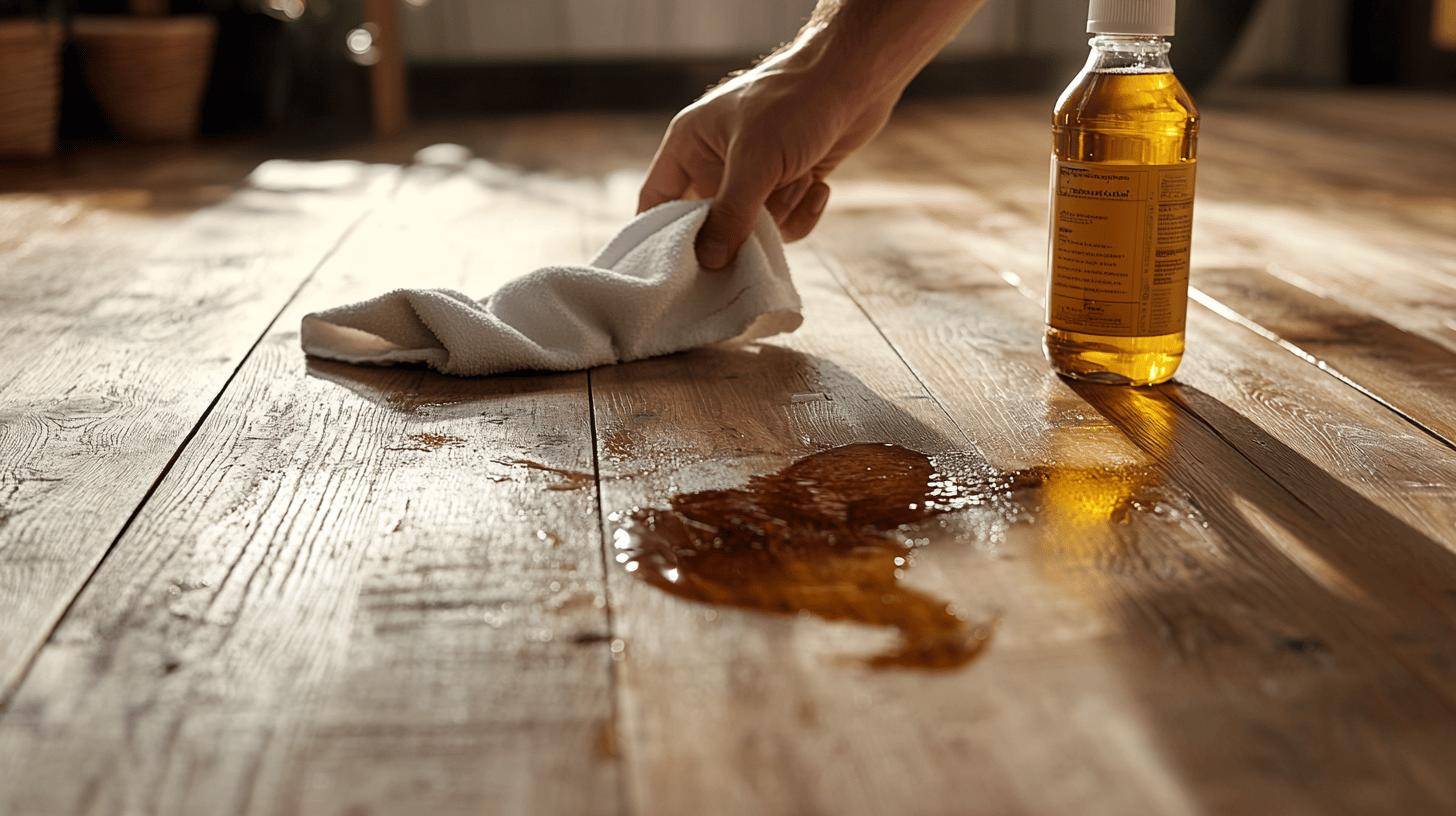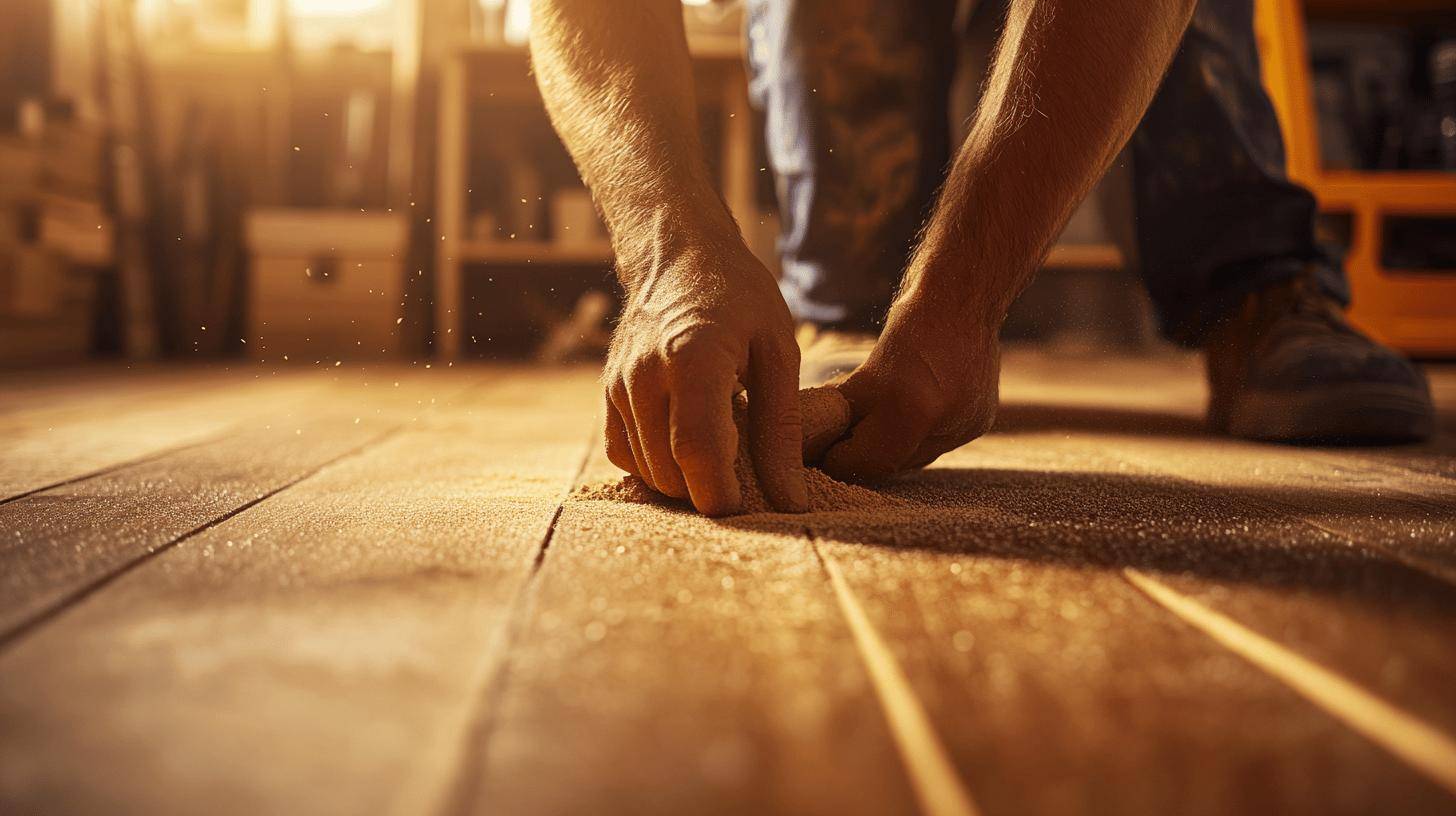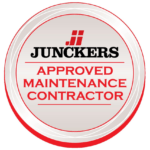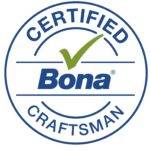Is your commercial space looking dull and worn out? You might be overlooking one crucial aspect—your floors. Worn, scratched floors can significantly affect the aesthetics and vibe of a busy environment. Commercial floor sanding is the unsung hero that revives tired wooden floors, making them look as good as new. Beyond just appearance, this process improves safety, extends floor life, and enhances property value. Dive in to learn how commercial floor sanding can transform your space and why now is the time to act.
Commercial Floor Sanding: Understanding the Basics
Commercial floor sanding involves using specialised equipment to remove the top layer of wooden floors. This process eliminates imperfections such as scratches, dents, and old finishes. Using continuous belt sanding machines and mobile extraction units, professionals ensure a virtually dust-free environment. The result is a rejuvenated floor, providing a smooth, clean surface ready for staining or finishing. This service is particularly essential in high-traffic areas, where wear and tear are more pronounced.
The importance of commercial floor sanding cannot be overstated. For commercial properties, maintaining the aesthetics and longevity of floors is critical. High-traffic areas such as offices, restaurants, and schools experience significant footfall, leading to quicker deterioration of floor surfaces. Regular sanding and refinishing remove these signs of wear, enhancing the overall appearance and durability of the flooring. Furthermore, a well-maintained floor contributes to a professional and inviting atmosphere, which is crucial for businesses that rely on customer footfall.
Common commercial settings that benefit from floor sanding include:
- Offices
- Restaurants
- Schools
- Hotels
- Retail stores
Regular floor maintenance, including periodic sanding, provides numerous benefits. It extends the lifespan of the flooring, reducing the need for costly repairs or replacements. Additionally, it enhances safety by removing uneven surfaces that could pose tripping hazards. Regular sanding also ensures that the floor remains clean and professional, which is vital for creating a positive impression on clients and visitors. Ultimately, investing in regular floor maintenance helps businesses maintain a polished and professional environment, thereby supporting their overall brand image.
Equipment Used in Commercial Floor Sanding
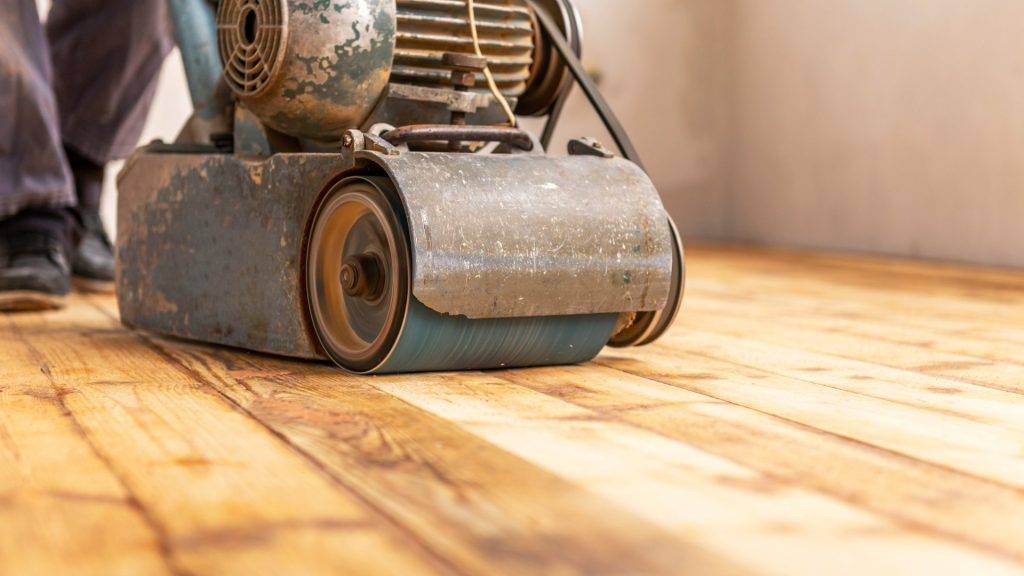
Commercial floor sanding requires specialised equipment to achieve high-quality results efficiently. The primary machines used include continuous belt sanding machines, which are ideal for covering large areas quickly and uniformly. These machines operate with a continuous loop of sandpaper, ensuring a smooth and consistent finish. Edging sanders are also crucial, as they handle corners and edges that the larger machines cannot reach. Orbital sanders, which move in a random pattern, are used for the final stages of sanding to eliminate any marks left by previous machines, providing a flawless finish.
Dust extraction systems are an essential component of commercial floor sanding operations. These systems are designed to capture dust particles generated during the sanding process, ensuring a virtually dust-free environment. This is particularly important in commercial settings where maintaining a clean workspace is critical for both worker safety and customer satisfaction. Mobile extraction units and built-in dust collection mechanisms in sanding machines help minimise airborne dust, reducing the risk of respiratory issues and simplifying post-sanding clean-up.
Various types of sanders serve different purposes in woodworking. The continuous belt sander is primarily used for large surface areas, offering efficiency and a consistent finish. For corners and edges, the edging sander provides precision in hard-to-reach areas. In the final sanding stages, the orbital sander comes into play, eliminating marks and ensuring smoothness across the surface. Each of these tools contributes uniquely to achieving a professional-quality finish in woodworking projects.
Choosing the Right Commercial Floor Sanding Service
Selecting a reputable commercial floor sanding service is crucial for ensuring high-quality results and long-lasting floor finishes. A reliable company will have extensive experience, a solid track record, and positive customer reviews. These factors indicate their ability to handle various flooring types and conditions, delivering consistent and professional outcomes. Additionally, a reputable company will use top-tier equipment and materials, ensuring the best possible finish for your floors.
When evaluating potential floor sanding service providers, several key criteria should be considered. Firstly, the company’s experience in the industry is paramount; seasoned professionals are more likely to navigate complex projects successfully. Secondly, customer reviews and testimonials offer valuable insights into the company’s reliability and quality of service. Thirdly, the quality of the equipment used by the company plays a significant role in the final outcome. Professional-grade machines and materials ensure a smoother, more durable finish. Lastly, consider the company’s flexibility and customer service. A company that can accommodate your schedule and provide comprehensive support is invaluable.
Questions to ask potential service providers:
- What is your experience with commercial floor sanding?
- Can you provide references or customer testimonials?
- What type of equipment and materials do you use?
- Do you offer any guarantees or warranties on your work?
Ryan’s Restoration stands out as an exemplary choice for commercial floor sanding services. Known for their exceptional service and use of industry-leading finishes, they offer flexible scheduling to minimise disruption to your business operations. The company also provides a 2-year warranty on all work, ensuring peace of mind and confidence in their craftsmanship. Customer testimonials consistently highlight their professionalism, attention to detail, and outstanding results, making Ryan’s Restoration a trusted partner for your floor sanding needs.
The Commercial Floor Sanding Process Explained
The first stage of commercial floor sanding is the initial assessment. During this step, professionals inspect the floor to identify areas that require repair and determine the overall condition of the wood. This assessment is crucial for planning the sanding process and ensuring all imperfections are addressed. Experts will evaluate factors such as the depth of scratches, the presence of stains, and any structural issues that might affect the final result.
Next, the preparation phase begins. This involves clearing the space of all furniture and items to ensure an unobstructed work area. Non-sanded surfaces, such as walls and fixtures, are protected using coverings to prevent dust and damage. Preparation also includes ensuring the floor is free from debris, nails, or staples that could hinder the sanding process. Proper preparation is essential for achieving a smooth and even finish.
The sanding process itself is carried out in multiple stages using different grit levels of sandpaper. Starting with a coarse grit, the initial sanding removes the old finish, scratches, and dents. Subsequent sandings use progressively finer grits to achieve a smoother surface. Each stage is meticulously executed to ensure a consistent and even finish across the entire floor. This multi-stage approach not only restores the floor’s appearance but also prepares it for the final finishing touches.
Finishing Touches
The finishing stage involves applying stains and protective coatings to the sanded floor. Stains enhance the wood’s natural colour and can be customised to match the desired aesthetic. Once the stain is applied and dried, a protective coating is added. This coating, typically polyurethane or a similar product, ensures the floor’s durability and adds a glossy or matte finish, depending on preference. The protective layer guards against future wear and tear, maintaining the floor’s beauty and extending its lifespan.
Ryan’s Restoration offers a thorough and detailed sanding process, ensuring high-quality results. Their expertise guarantees that each stage, from assessment to finishing touches, is executed with precision. By following this comprehensive approach, Ryan’s Restoration delivers a flawlessly restored floor that enhances the overall ambiance and functionality of any commercial space.
The Benefits of Commercial Floor Sanding
Commercial floor sanding significantly enhances the aesthetic appeal of your space. By removing scratches, dents, and old finishes, the process reveals the natural beauty of the wood, making the floor look brand new. A well-sanded floor not only looks more attractive but also contributes to a more inviting and professional atmosphere. This visual improvement can be particularly beneficial for businesses that rely on creating a positive first impression, such as retail stores, offices, and hospitality venues.
In addition to aesthetic enhancements, commercial floor sanding offers practical benefits like improved safety and extended floor lifespan. Uneven surfaces and worn-out finishes can pose tripping hazards, which are effectively eliminated through sanding. The process also strengthens the wood, making it more resistant to future wear and tear. This durability ensures that the flooring can withstand heavy foot traffic common in commercial environments, thereby reducing the frequency of costly repairs and replacements.
Long-term advantages of commercial floor sanding include:
- Increased property value
- Reduced maintenance costs
- Enhanced safety
- Improved indoor air quality
Regular maintenance, including periodic sanding, is crucial for preserving these benefits. Keeping the floor in optimal condition not only prolongs its lifespan but also maintains its aesthetic and functional qualities. Consistent upkeep prevents the accumulation of dirt and grime, ensuring a clean and professional environment. This ongoing care is essential for businesses aiming to maintain a polished appearance and provide a safe, welcoming space for employees and customers alike.
Post-Sanding Maintenance Tips for Commercial Floors
Proper maintenance following a commercial floor sanding service is crucial for preserving the newly refinished surface. Regular cleaning, appropriate floor cleaners, and periodic reapplication of protective coatings are essential to maintain the floor’s appearance and durability. Without ongoing care, the floor can quickly revert to its pre-sanding state, diminishing the investment made in its restoration. Ensuring that furniture has protective pads can prevent scratches and further damage, thereby extending the floor’s lifespan. Ryan’s Restoration provides detailed guidelines to help businesses maintain their floors effectively, ensuring long-term satisfaction and value.
For cleaning, avoid using harsh chemicals as they can strip the protective coatings and damage the wood. Instead, opt for cleaners specifically formulated for wooden floors. Regular sweeping or vacuuming is recommended to remove dust and debris that can cause scratches. Periodically, reapply a protective coating to guard against wear and tear, especially in high-traffic areas. This practice not only maintains the floor’s aesthetic appeal but also enhances its durability, ensuring it remains in excellent condition for years to come.
Specific maintenance tips include:
- Avoid harsh chemicals: Use cleaners formulated for wooden floors.
- Use furniture pads: Prevent scratches by placing pads on furniture legs.
- Regularly sweep or vacuum: Remove dust and debris to avoid scratches.
- Reapply protective coatings periodically: Maintain durability and appearance.
- Address spills promptly: Prevent stains and water damage by cleaning spills immediately.
By following these maintenance tips, businesses can ensure their commercial floors remain pristine and professional, reflecting a commitment to quality and care.
Final Words
In the action, commercial floor sanding significantly enhances both the aesthetic and practical aspects of high-traffic areas. By employing advanced sanding equipment, the process efficiently removes imperfections while maintaining a virtually dust-free environment.
Choosing a reputable service like Ryan’s Restoration ensures quality results, leveraging professional expertise and top-tier machinery. Additionally, understanding the detailed steps of the sanding process and the importance of ongoing maintenance helps maximise floor longevity.
Commercial floor sanding is a valuable investment, improving appearance, safety, and property value. Embrace this service to ensure your commercial space remains both attractive and durable.
FAQ
Q: What is a commercial floor sanding machine?
A: A commercial floor sanding machine is specialised equipment used to remove the top layer of wooden floors. This process eliminates imperfections and prepares the surface for staining or finishing.
Q: What is the cost of commercial floor sanding?
A: The cost of commercial floor sanding varies based on floor size, condition, and service provider. It’s best to request a detailed quote from a professional floor sanding service for precise pricing.
Q: Why should I use professional commercial floor sanding services?
A: Using professional commercial floor sanding services ensures high-quality results, efficient use of specialised equipment, and proper handling of large areas. Experts also offer valuable maintenance advice.
Q: Why is floor maintenance important after sanding?
A: Proper post-sanding maintenance extends the floor’s lifespan, maintains its appearance, and ensures safety. Regular cleaning, using the right floor cleaners, and periodic reapplication of protective coatings are essential.
Q: How do I choose the right commercial floor sanding service?
A: When choosing a commercial floor sanding service, consider their experience, customer reviews, equipment quality, and any warranties offered. This ensures reliable results and peace of mind.
Q: What are the benefits of commercial floor sanding?
A: Commercial floor sanding improves floor appearance, extends its lifespan, enhances safety by removing uneven surfaces, and can increase property value. Regular maintenance prevents costly future repairs.


